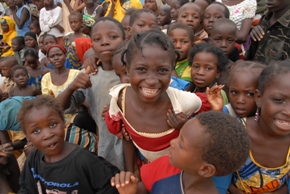Leprosy in Our Time – Medical and Social Challenges
Leprosy – a curable disease

Development of an effective cure
Only in the middle of the 20th century did the first real breakthrough occur in the treatment of leprosy. With the development of the drug dapsone, a way was found to arrest the disease.
But dapsone treatment lasted for years, making it difficult for patients to adhere to it. Furthermore, M. leprae began to develop resistance to dapsone, and so a new remedy was required.
Two new drugs, rifampicin and clofazimine, were discovered in the 1960s. Together with dapsone, these became the components of a new treatment administered as multidrug therapy, or MDT.
In 1981, the World Health Organization recommended MDT as the best way to treat leprosy. Safe, effective, and easily administered under field conditions, MDT comes in monthly blister packs. A course of MDT cures a patient of leprosy within 6 to 12 months. Since 1995, the WHO has supplied MDT free to all registered leprosy patients, initially with funding from The Nippon Foundation and, subsequently, through MDT donated by Novartis and the Novartis Foundation for Sustainable Development.

Eliminating leprosy as a public health problem
The introduction of multidrug therapy has had a significant impact on leprosy control. Over the past two decades, 16 million people have been cured of the disease and there has been a dramatic reduction in the number of new cases reported annually.
In 1991, encouraged by MDT’s effectiveness, the World Health Assembly passed a resolution to eliminate leprosy as a public health problem. As defined by the WHO, leprosy is no longer considered a public health problem when the prevalence rate of the disease falls below one case per 10,000 people.
The Nippon Foundation, together with its associate the Sasakawa Health Foundation, has played an important role in supporting the effort to eliminate leprosy, working in close partnership with the WHO, governments of endemic countries, and international and local NGOs.
Of 88 countries where leprosy was considered a public health problem at the time of the World Health Assembly resolution, just one—Brazil—has still to reach this goal. Yet elimination is only a staging post on the road to a world without leprosy. Completing the “last mile” is the hardest.



